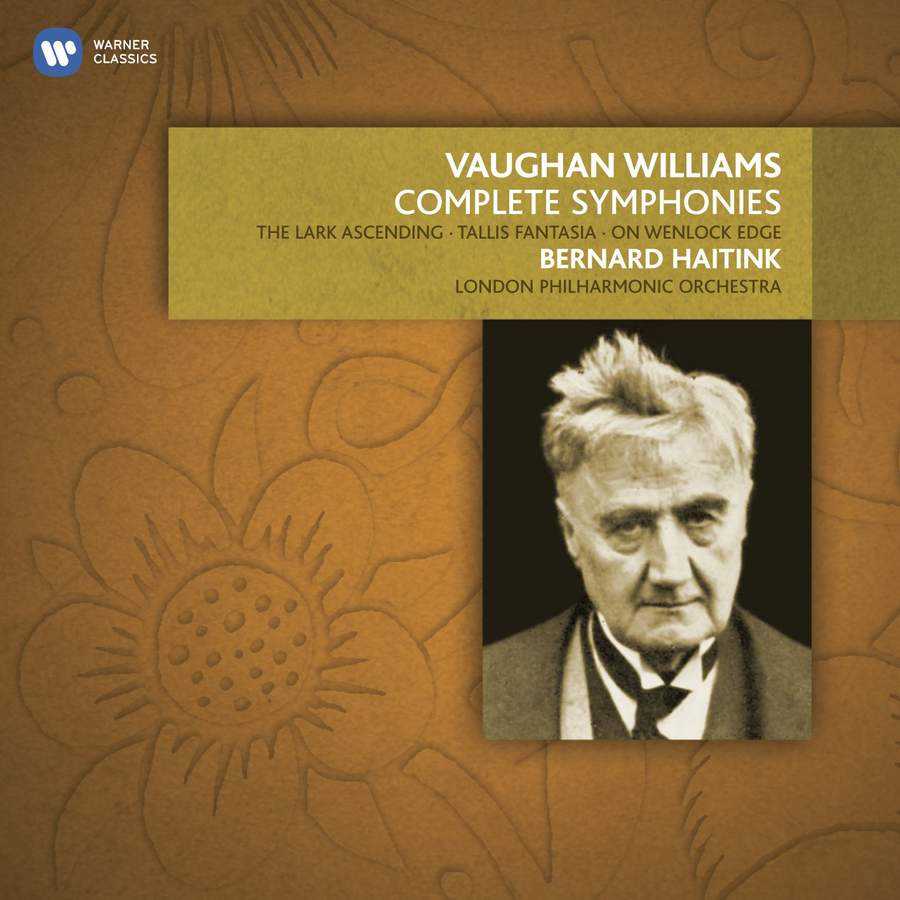Debussy Orchestral Music
Royal Concertgebouw Orchestra / Bernard Haitink
If you have been following Gramophone’s response to new recordings of Debussy’s La mer, Nocturnes and Jeux for the last 15 or so years, you will probably have found many references to Haitink’s late-1970s recordings, usually to the newcomer’s disadvantage. In the 1980s Philips transferred some of them on to two separate full-price CDs: the Gramophone Award-winning Nocturnes and Jeux were uneconomically coupled on the first (6/83), and the second included La mer, the Prelude, and »Iberia» only from his complete Images (6/87). At last, Philips have repackaged them to include the full contents of all three LPs – on two CDs for the price of one. Space has also been found for Debussy’s last orchestral work, the short Berceuse heroique conducted by Eduard van Beinum (in excellent 1957 stereo). All considerations – minutes for money, performance, recording, documentation – make this package a genuine bargain. John Steane (March 1994)
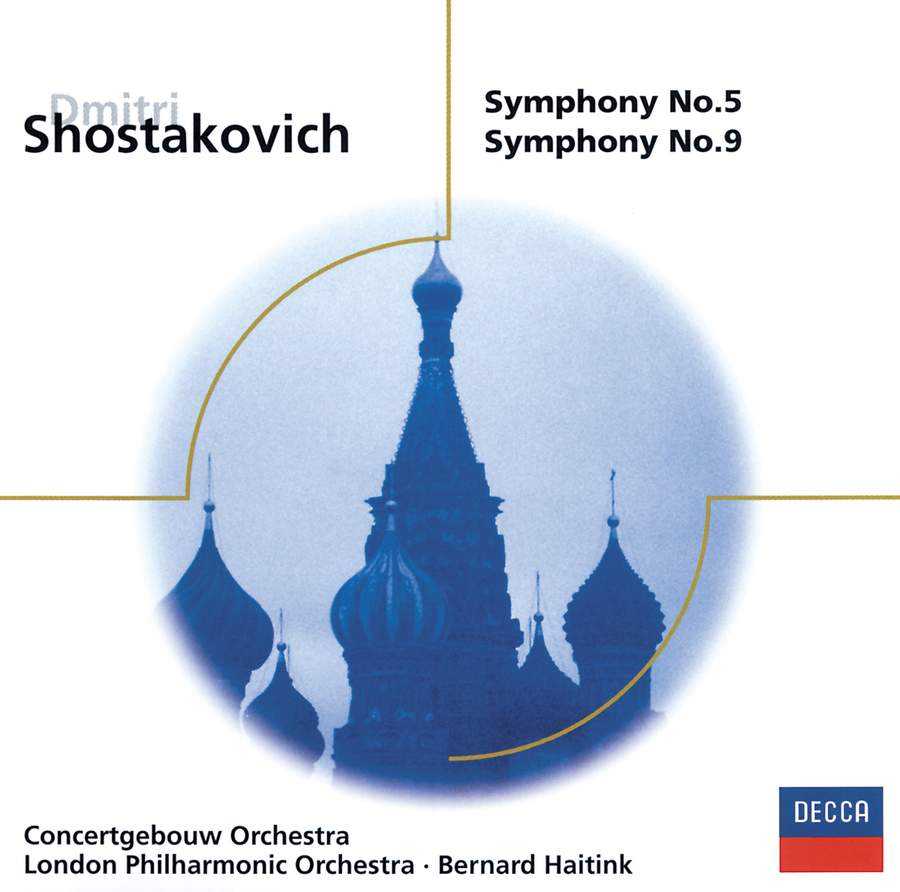
Beethoven Symphonies Nos 2 & 6
London Symphony Orchestra / Bernard Haitink
Very much to my liking, this – the punchy, neatly packed sound; the way the timps thwack away at the right-hand side of the stage, the antiphonally placed fiddles busying to and fro, Haitink’s unmannered, high-energy but essentially non-aggressive approach to both symphonies. The first thing that strikes you about the Pastoral is its sensitive shaping. The second is the lively pacing, but never breathless or unduly hurried. The ‘Scene by the brook’ ebbs and flows at roughly the prescribed speed and yet the LSO’s playing, ever warm-hearted, never adopts ‘period’ affectations: it’s as if the laudable old guard has had a wash, a brush-up and a slight change of heart regarding tempo and articulation. The ‘Peasants’ Merrymaking’ enjoys something of Toscanini’s bacchanalian drive, the storm a measure of his dynamism. Both readings are profoundly satisfying, the work of musicians who know the scores backwards, love playing them and know what not to do. To say that they provide a new benchmark would be crass; but Haitink and the LSO seem set to provide one of the top Beethoven symphony cycles of the digital era. Rob Cowan (August 2006)
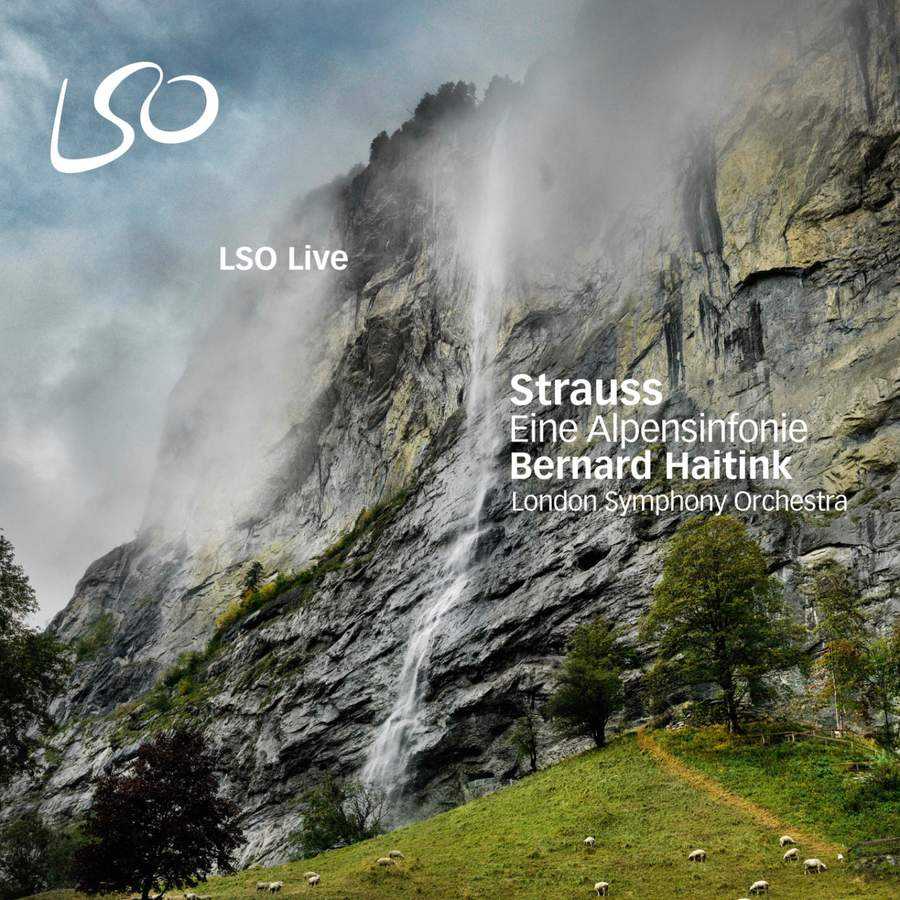
Brahms Symphony No 2. Double Concerto
Gordan Nikolitch vn Tim Hugh vc London Symphony Orchestra / Bernard Haitink
The first thing to note about this exceptional new disc is the superb quality of Haitink’s accompaniment – if ‘accompaniment’ adequately describes so trenchant a marshalling of the musical facts allied to an imaginative flexibility which allows the soloists to count themselves kings of infinite space in the lyric outpourings at the heart of the work. The sweet-toned Gordan Nikolitch and the burlier-sounding, though endlessly responsive, Tim Hugh are perfectly matched one to the other and grow ever closer and more eloquent as the romantic, at times almost operatic, colloquy of the two opening movements unfolds. After which, slippered ease and remembered passion is the order of the day in a sweetly judged reading of the finale. The recording, rich and immediate, brings out in gratifying measure the tactile quality of Brahms’s writing.
It used to be the case, as Monteux’s 1962 recording of the Second Symphony confirms, that the LSO lacked an accredited ‘Brahms sound’. This is no longer the case, though there remains an element of ‘what you require, we provide’ in the orchestra’s approach to Brahms. Haitink’s 1990 Boston recording of the symphony has a certain Mediterranean glow to it. In this imposing and beautifully shaded new LSO performance, we return north again with a reading that is weightier and even more cleanly articulated than his 1973 Amsterdam version. Haitink, I sense, loves the work but remains troubled by it, which is as it should be. This has always been a more troubling piece than the pastoralists and mañana merchants would have us believe. Richard Osborne (March 2004)
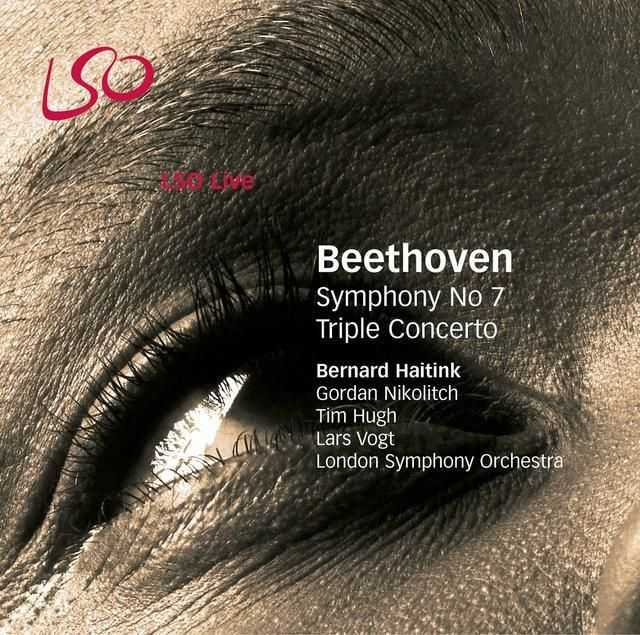
Beethoven Symphony No 7. Triple Concerto
Gordan Nikolitch vn Tim Hugh vc Lars Vogt pf; London Symphony Orchestra / Bernard Haitink
Nothing like having your expectations challenged, especially in Beethoven where interpretative templates tend to settle for good. Past experience of Bernard Haitink in the symphonies left an impression of worthiness and generalised musicality; but the first instalment of the conductor’s projected live Beethoven symphony cycle with the London Symphony Orchestra witnesses a significantly increased adrenalin count. As well as being vital and intelligently thought through, Haitink’s new Seventh honours all repeats and has the inestimable advantage of spatially divided violin desks, particularly telling in the clear but relatively dry Barbican Hall acoustic. The first movement’s bracing rhythms gambol rather than storm and there’s genuine tenderness in the Allegretto. The Scherzo’s dancing gait and the unforced momentum of the finale is very attractive.
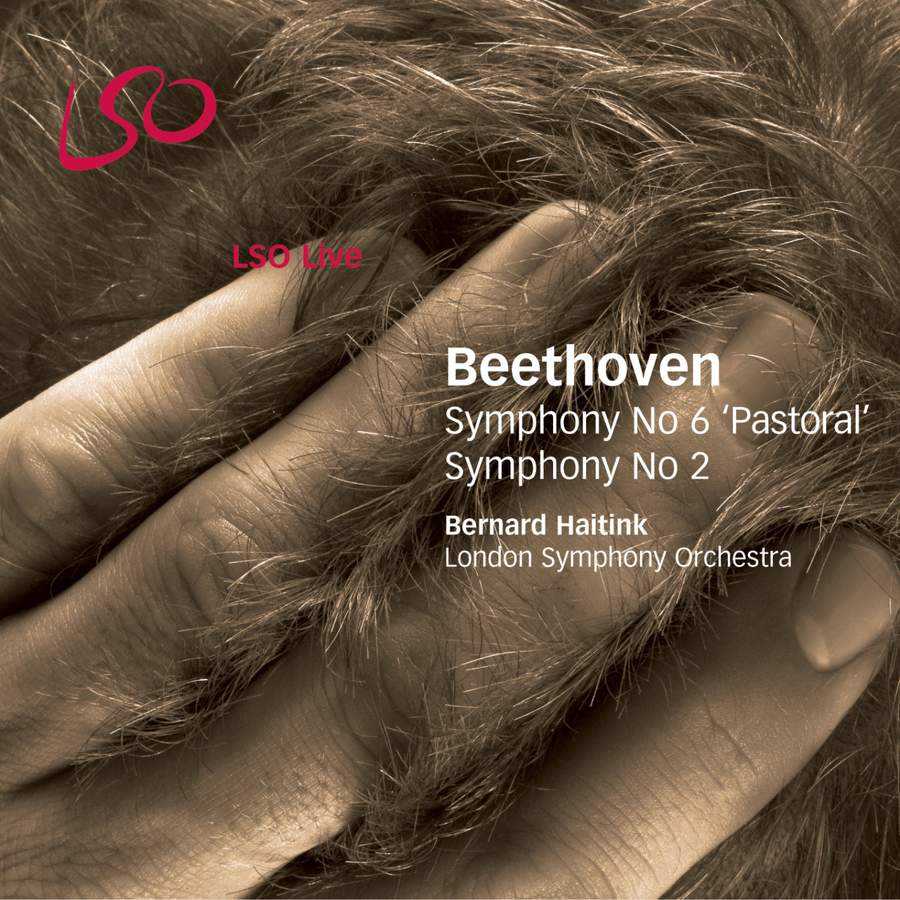
Mahler Symphony No 2
Charlotte Margiono sop Jard van Nes alto; Staatskapelle Dresden / Bernard Haitink
Bernard Haitink’s nobility as a Mahler interpreter benefits the Resurrection Symphony like no other, a fact attested by numerous recordings, of which this extraordinarily moving Dresden performance is the most recently released. As to the differences between this and its various predecessors (though Haitink’s steel-and-velvet 2008 Chicago recording post-dates it chronologically), the sound profiles of the various orchestras are significant factors. Two fine Royal Concertgebouw Orchestra recordings (one of them emanating from Haitink’s Eurovision Christmas Matinee Mahler series) enjoy characteristic amplitude and space for dynamic growth; there’s a little-known version with the Netherlands Radio Choir and the Rotterdam Philharmonic (1990, and once available as a ‘pirate’ CD), more drily recorded and more overtly dramatic; and versions from Berlin (1993, typically sumptuous) and, as just mentioned, Chicago. This particular Haitink performance was given on the 50th anniversary of the Dresden bombing (February 13, 1995), just as the Rotterdam performance commemorated the 50th anniversary of the bombing of that city on May 14, 1940. Both lay claim to being Haitink’s finest, the Dresden option – which drew from those present not the usual volleys of unwanted applause but awestruck silence – being a significant find. Rob Cowan (October 2012)
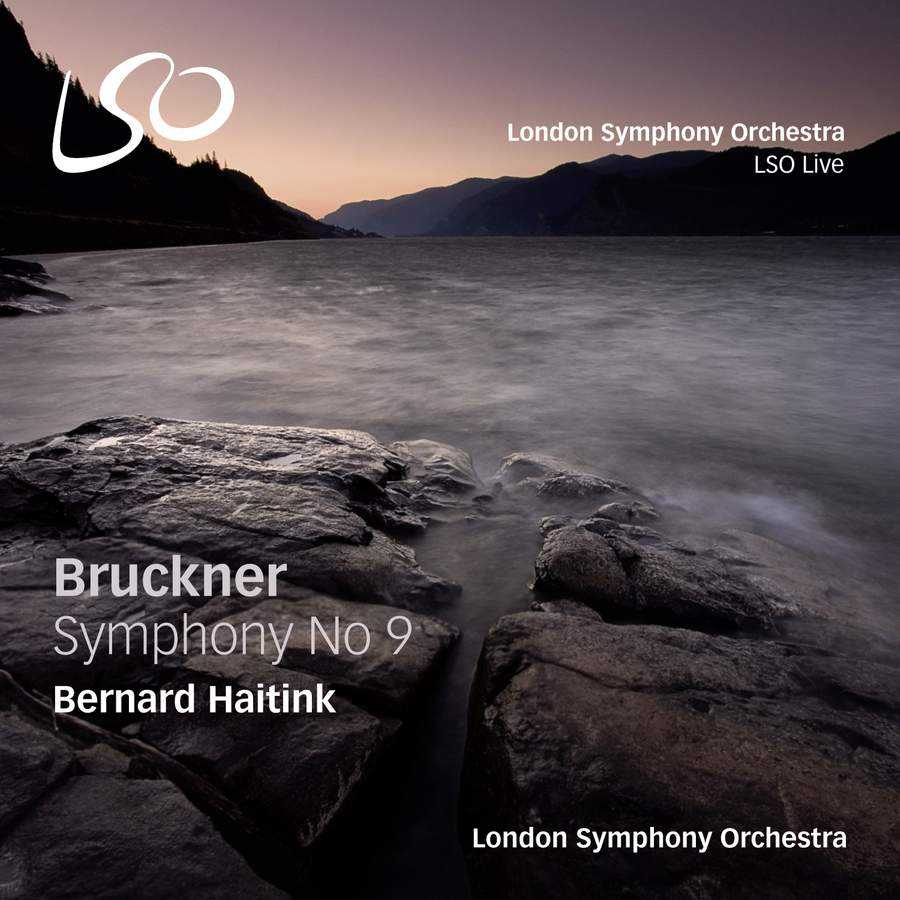
Beethoven Missa Solemnis
Genia Kühmeier sop Elisabeth Kulman mezzo Mark Padmore ten Hanno Müller-Brachmann bass-bar; Bavarian Radio Symphony Chorus and Orchestra / Bernard Haitink
As befits a musician of his age and experience, Haitink sees the work whole. He holds the Mass’s dramatic and meditative elements in a near ideal accord and projects them unerringly in a single 80-minute span. It is interesting, however, that at no point is one remotely aware that the performance is being conducted. It simply is. Take the opening of the Credo. Given a perfectly judged Allegro ma non troppo and a rock-steady pulse, the music appears to circle on itself with all the inevitability of a planet circling its sun. This is a wonderful account of the movement, not least in the deep sense of indwelling which the orchestra and Haitink’s superb quartet of soloists led by Mark Padmore bring to the ‘Crucifixus’. After that, there is no looking back. The meditative passages of the Benedictus and Agnus Dei are similarly fine, with the Agnus Dei itself bringing the great work powerfully yet calmly to its appointed end. Richard Osborne (August 2015)
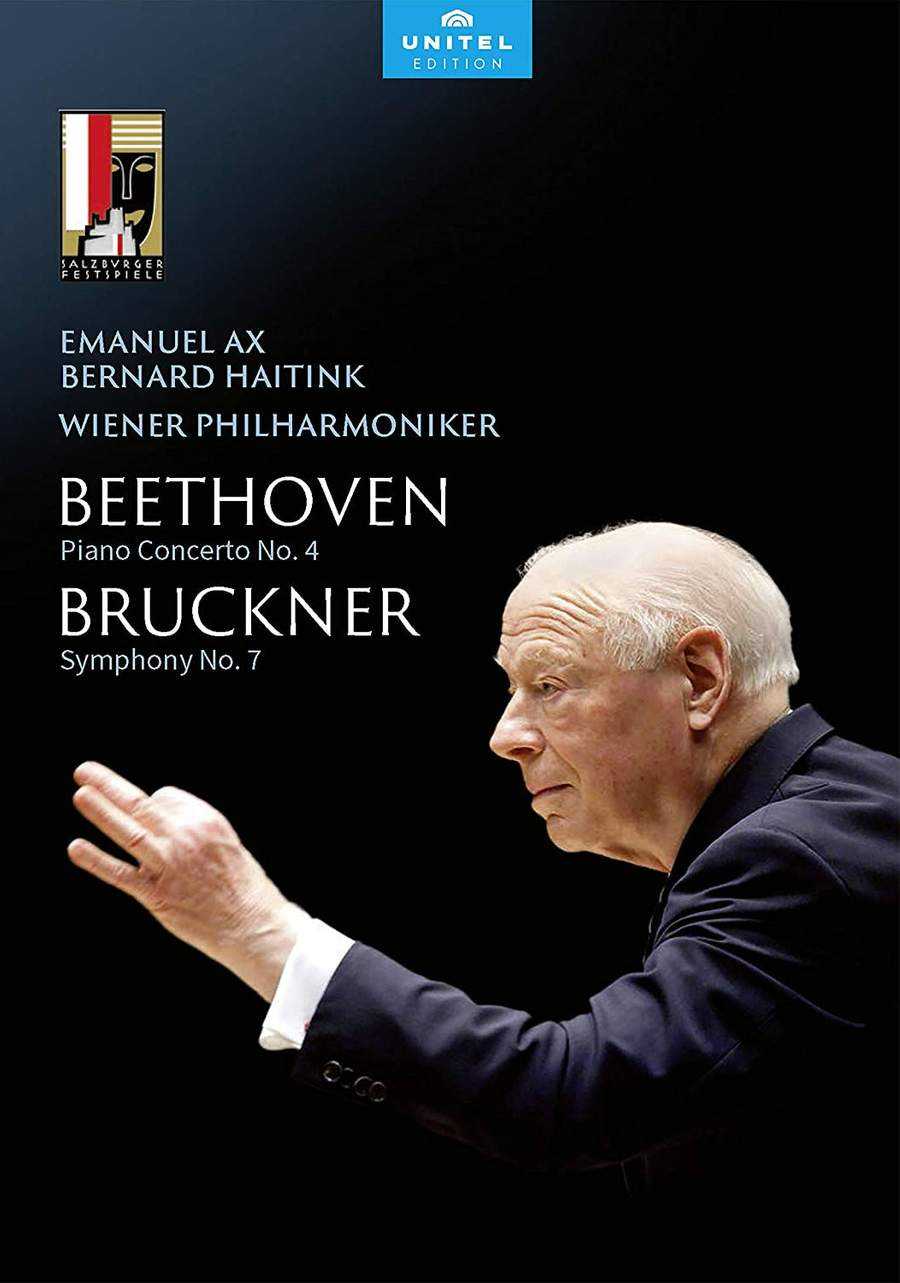
Mozart Don Giovanni
Sols incl Thomas Allen, Carol Vaness, Maria Ewing; Glyndebourne Chorus & London Philharmonic Orchestra / Bernard Haitink
As in all Glyndebourne performances, the sum is often greater than the parts, and the cast works together as a team better than any save Walter Legge’s assembly for Giulini (HMV). For that, for Haitink’s interpretation, for the most lively delivery of the recitative since Giulini’s version, and for at least four of the principals, I would make this myGiovannichoice, not to overlook a well-balanced, unobtrusive (and therefore typically EMI) recording. Alan Blyth (July 1984)
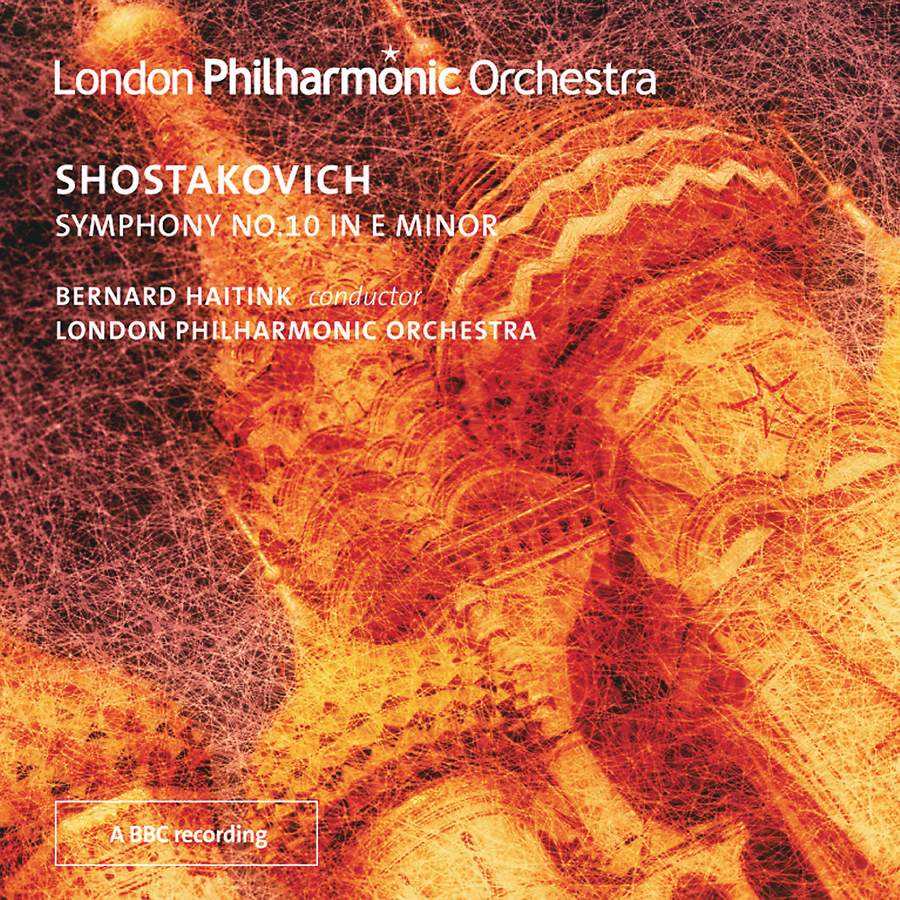
R Strauss Eine Alpensinfonie
London Symphony Orchestra / Bernard Haitink
The performance gathers strength and intensity as it proceeds. The ripe blast of the LSO brass in full cry may be too much for some listeners as the mists clear on the summit. The acoustic properties of the venue impart little in the way of Mitteleuropean warmth and depth, though hybrid SACD encoding adds some atmosphere and (synthetically?) distanced offstage hunters’ fanfares. String sound is at once full and lean, possibly reflecting a conscious disavowal of easy sentimentality and superficial excitement. Even without a coupling, admirers of this approach should not hesitate to acquire an archetypal example of Haitink’s unobtrusive podium manner. David Gutman (April 2010)
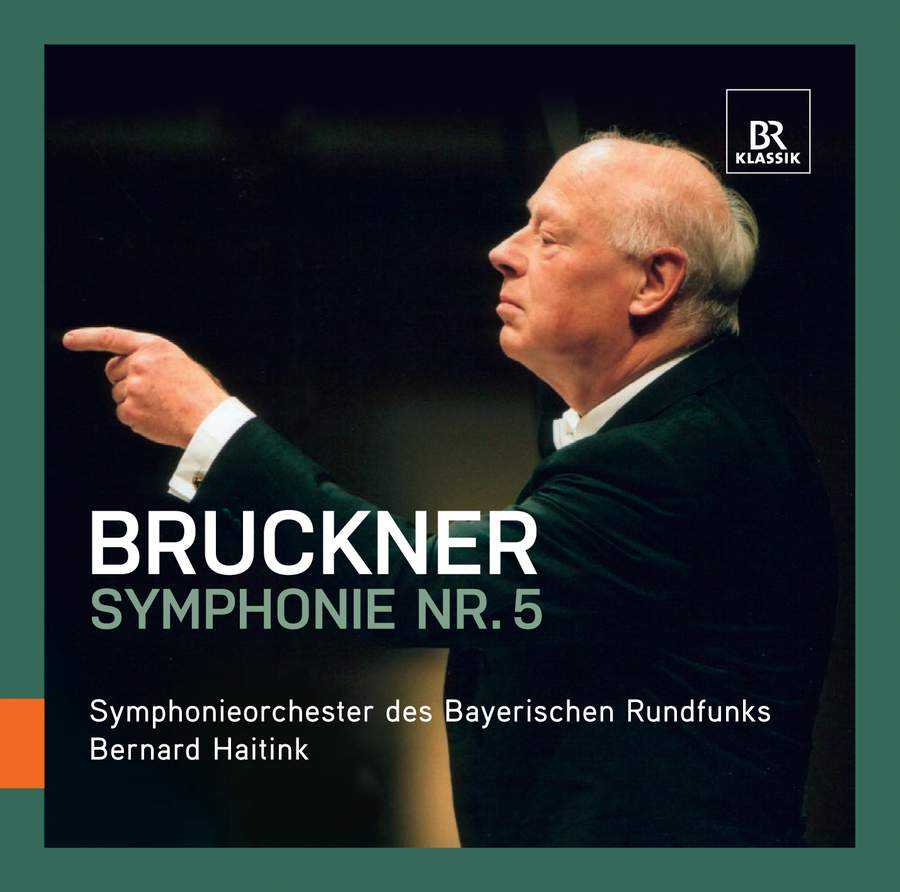
Beethoven Piano Concertos Nos 1-5
Murray Perahia; Concertgebouw Orchestra / Bernard Haitink
I’m aware there are colleagues writing in Gramophone who have reviewed many more recordings of Beethoven piano concertos than I but I risk the statement that the excellence of Haitink and the Concertgebouw in these has not been surpassed. The recordings, made in the Concertgebouw, reflect the acoustic character of the hall, and the balances suggest the natural perspective of solo piano with orchestra as we might experience it there from a good seat. When you turn to other records you may be struck by how unnaturally imminent the piano often is in relation to the rest. You are likely to be impressed here, I think, by the depth of the perspective, by the clear placing of everything in the picture and by how well the recording team have captured the lightness and translucence of the sound. Above all, Haitink has given the sound variety of weight. The beginning of the C minor’s first movement, for instance, is refreshingly lithe and crisp, with a late eighteenth- rather than late nineteenth-century gravitas to it, and it makes you think straightaway of the Concerto in the same key by Mozart for which Beethoven had such admiration and without which his own might not have been written the way it is. The sound gives you a heightened sense of where the piece comes from and where it belongs in Beethoven’s work. But then equally admirable is the way Haitink characterises Beethoven, through the sound, when he is at his most original: at the beginning of the Fourth Concerto’s slow movement, for example, where the string writing has you by the throat, and again at the moment in the finale of the G major, at the first tutti, where the trumpets and drums enter for the first time, with electrifying effect. Stephen Plaistow (July 1986)
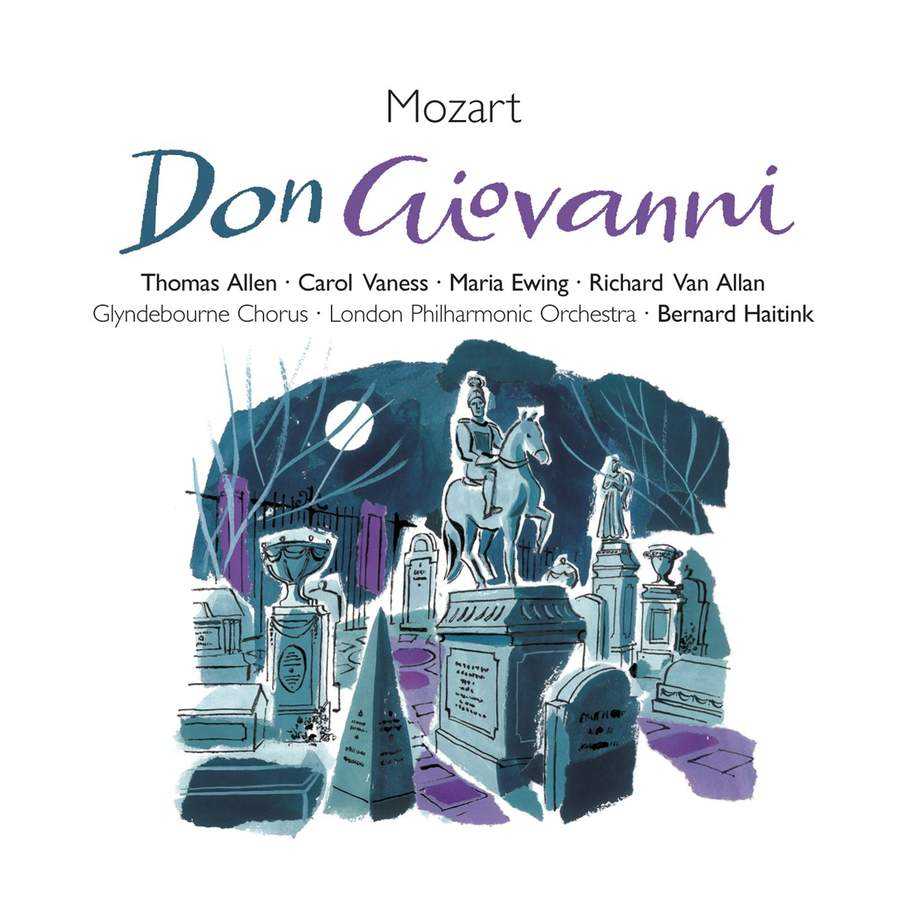
Beethoven Piano Concerto No 4 Bruckner Symphony No 7
Emanuel Ax pf Vienna Philharmonic Orchestra / Bernard Haitink
There is no place in the Seventh for the flinty-eyed vision of the abyss that stamped Haitink’s approach to the unfinished Ninth with an increasingly memento mori bleakness. Wholeness in the here and now is instead established from the outset with the patient but subtly inflected first theme’s unfolding by the Viennese cellos. Compared to his Concertgebouw recordings, the difference is one of being and becoming. Richard Osborne remarked on the ‘deliberately unmoulded’ nature of the second recording (Philips, 4/79); no one could reasonably say the same of his final address to the piece, listening to the Gesangvoll intensity of the second theme once recapitulated, the additional flesh on the bones of the usually perky third theme and its marked preparation for the magical first entry of the timpani, sehr feierlich (very solemn) indeed. Peter Quantrill (October 2020)
Never miss an issue of Gramophone magazine – subscribe today
Selected discography[]
Royal Concertgebouw Orchestra,
- Bruckner: Symphonies 0-9 (Philips)
- Debussy: Orchestral Works (Philips, 1976–79)
- Mahler: Symphonies 1–9 (Philips)
- Mahler: Symphony No. 2 «Resurrection», Elly Ameling, Aafje Heynis, Netherlands Radio Chorus, (Philips 1968).
- Ravel: Orchestral Works (Philips 1971–77)
- Tchaikovsky: Symphonies 4, 5 & 6. (Philips, 1979)
- Shostakovich: Symphony no.15 (RCO live 2012).
- Schumann: Symphony No.3 in E flat «Rhenish» (Philips 411 104-1, 1983)
Boston Symphony Orchestra:
- Brahms: Symphony No. 1, Nanie with the Tanglewood Festival Chorus (Philips, 1994)
- Brahms: Symphony No. 2 in D Major, Tragic Overture (Philips, 1990)
- Brahms: Symphony No. 3, Alto Rhapsody with Jard Van Nes with the men of the Tanglewood Festival Chorus (Philips, 1993)
- Brahms: Symphony No. 4 in E Minor, Haydn Variations (Philips, 1992)
- Brahms: Piano Concerto No. 2, with Emanuel Ax (Sony, 1997)
- Ravel: Daphnis and Chloe with Tanglewood Festival Chorus (Philips, 1989)
- Ravel: Ma Mere l’Oye, Menuet antique, Rapsodie espagnole, La Valse (Philips, 1995)
- Ravel: Alborada del Gracioso, Bolero, Le tombeau de Couperin, Valses nobles et sentimentales (Philips, 1996)
Chicago Symphony Orchestra:
- Mahler, Symphony No. 2] (2009)
- Mahler: Symphony No. 3]] (2007)
- Mahler: Symphony No. 6] (2008)
- Shostakovich: Symphony No. 4] (2008)
- Richard Strauss: Ein Heldenleben (with Anton Webern: Im Sommerwind)] (2010)
London Philharmonic Orchestra:
Bernard Haitink
Дата рождения
04.03.1929
Профессия
дирижёр
Страна
Нидерланды
Виллем Менгельберг, Бруно Вальтер, Пьер Монте, Эдуард ван Бейнум, Эуген Йохум — таков блестящий перечень артистов, руководивших в XX веке знаменитым оркестром «Консертгебау» в Амстердаме. Тот факт, что несколько лет назад этот список пополнился именем молодого нидерландского дирижера Бернарда Хайтинка, уже сам по себе достаточно красноречив. Вместе с тем назначение на столь ответственный пост явилось и признанием его таланта, результатом успешно начатой и весьма стремительной карьеры.
Бернард Хайтинк окончил Амстердамскую консерваторию как скрипач, но после этого стал посещать дирижерские курсы Нидерландского радио, которые вел Ф. Лейтнер в Хилверсуме. Дирижерскую практику он проходил в Штутгартской опере, под руководством своего учителя. Еще в 1953 году Хайтинк был скрипачом в филармоническом оркестре радио Хилверсума, а в 1957 году возглавил этот коллектив и проработал с ним пять лет. За это время Хайтинк освоил огромное количество произведений, выступал со всеми оркестрами страны, в том числе неоднократно на протяжении ряда лет стоял по приглашению Бейнума за пультом «Концертгебау».
После смерти Бейнума молодой артист разделил с маститым Э. Йохумом пост главного дирижера оркестра. Хайтинку, не имевшему достаточного опыта, не сразу удалось завоевать авторитет музыкантов и публики. Но уже через два года критики признали его достойным продолжателем дела выдающихся предшественников. Опытный коллектив полюбил своего руководителя, помог возмужать его таланту.
Ныне Хайтинк прочно занимает место среди наиболее одаренных представителей европейской дирижерской молодежи. Это подтверждают не только его успехи на родине, но и гастрольные выступления в крупнейших центрах и на фестивалях — в Эдинбурге, Берлине, Лос-Анжелесе, Нью-Йорке, Праге. Высоко оценены критикой многие записи молодого дирижера, в том числе Первая симфония Малера, поэмы Сметаны, «Итальянское каприччио» Чайковского, сюита «Жар-птица» Стравинского.
Талант дирижера разносторонен, он привлекает ясностью и простотой. «Что бы он ни дирижировал,— пишет немецкий критик В. Швингер, — вас не покидает ощущение свежести и подкупающей естественности». Его вкус, чувство стиля я формы особенно ярко проявляются в исполнении поздних симфоний Гайдна, его же «Времен года», симфоний Шуберта, Брамса, Брукнера, «Ромео и Джульетты» Прокофьева. Часто исполняет Хайтинк и сочинения современных нидерландских композиторов — X. Бадингса, ван дер Хорста, де Леува и других. Наконец, удачными оказались и его первые оперные постановки — «Летучий голландец» и «Дон-Жуан».
Л. Григорьев, Я. Платек, 1969
В 1967—1979 годах был главным дирижёром Лондонского филармонического оркестра, в 1978—1988 годах — художественным руководителем Глайндборнского оперного фестиваля. В 1987—2002 годах Хайтинк возглавлял знаменитый лондонский оперный театр Ковент-Гарден, затем на протяжении двух лет руководил Дрезденской государственной капеллой, но в 2004 году расторг четырёхлетний контракт из-за разногласий с интендантом (директором) капеллы по организационным вопросам. В 1994—2000 годах руководил Молодёжным оркестром Европейского союза. С 2006 года Хайтинк — главный дирижёр Чикагского симфонического оркестра; первый сезон работы принёс ему в 2007 году звание «Музыкант года» по версии ассоциации профессиональных музыкантов «Musical America».
Публикации
Обзор концертной программы Зальцбургского фестиваля-2015 19.09.2015 в 16:56
Хроника четырех дней Люцернского летнего фестиваля-2014 23.10.2014 в 19:36
Bartók Duke Bluebeard’s Castle
Anne Sofie von Otter, John Tomlinson; Berlin Philharmonic Orchestra / Bernard Haitink
Haitink and the Berlin Philharmonic paint a rich aural backdrop that is neither too slow nor overly lugubrious and that shows due appreciation of Bartók’s seamless scoring, especially in terms of the woodwind. Haitink draws an aching curve to the string writing, but when, at 9’28» (track 7), Judith rushes panic-stricken towards the seventh door, fearful of Bluebeard’s secret murders, he effects a gradual but cumulatively thrilling accelerando. The internment itself is devastating, while Bluebeard’s helpless retreat marks a slow journey back to the questioning void. Recording live can have its pitfalls, but here the atmosphere is electric, the grasp of Bartók’s sombre tone-painting – whether sung or played absolute. EMI’s engineering favours a full soundstage rather than picking out specific instrumental details, but the overall effect remains comprehensively satisfying. As to rivals, Haitink is a definite first digital choice, while among older alternatives, Jimos Ferencsik’s mono recording (Hungaroton, 6/72 – nla) is especially idiomatic (Szekely and Palankay favour animated conversational exchanges) and Boulez has an especially vibrant Judith in Tatiana Troyanos. Rob Cowan (September 1996)
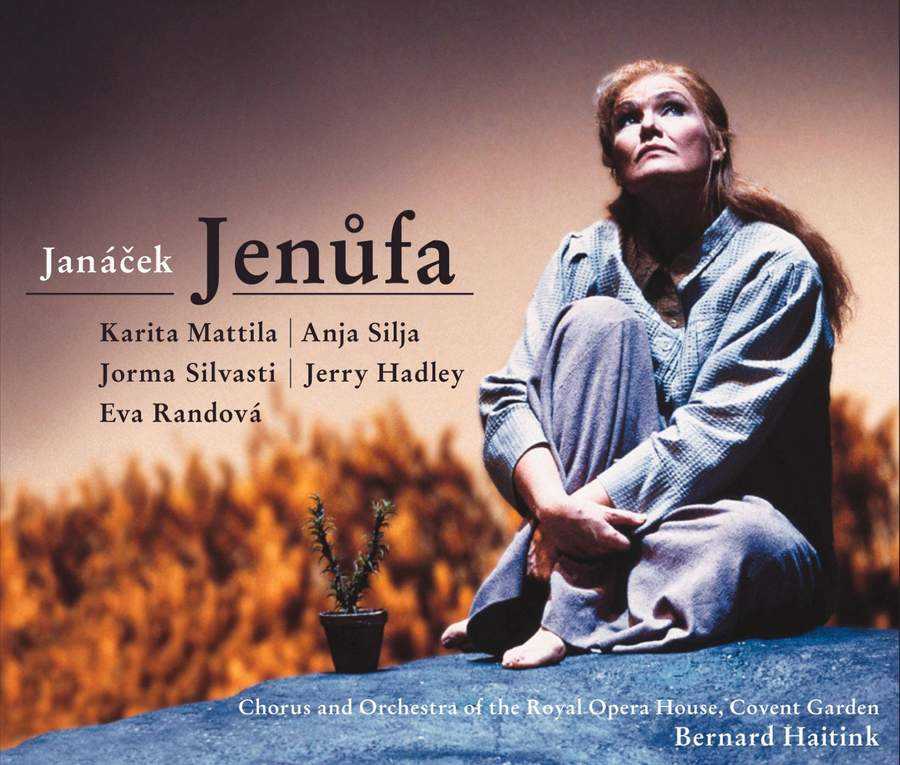
Избранная дискография
Королевский оркестр Консертгебау :
- Иоганнес Брамс : Симфонии 1–4, Концерты для фортепиано 1-2 с Клаудио Аррау (Philips)
- Антон Брукнер : Симфонии 0–9 (Philips)
- Клод Дебюсси : Оркестровые произведения (Philips, 1976–79)
-
Густав Малер
- Симфонии 1–9 (Philips)
- Симфония № 2 «Воскрешение» , Элли Амелинг , Аафье Хейнис , Нидерландский радиохор , (Philips 1968).
- Симфония № 5 ( ПЕНТАТОН в ремастеринге )
- Симфония № 8 « Симфония тысячи » ( PENTATONE в ремастеринге )
- Симфонии №№ 1–5, 7, 9 ( Kerstmatinee / Christmas Matinee; Philips)
- Симфония № 4 (RCO Live SACD)
-
Морис Равель
- Оркестровые произведения (Philips 1971–77)
- Daphnis et Chloé Suites & Ma mère l’oye (обновленный PENTATONE )
- Петр Ильич Чайковский : Симфонии 1–6 и Манфред (Philips, 1979)
-
Дмитрий Шостакович :
- Симфония № 8 (Декка, 1983)
- Симфония № 15 (RCO live 2012).
- Роберт Шуман : Симфония № 3 ми-бемоль «Рейнский» (Philips 411 104-1, 1983)
- Бокс-сет Symphony Edition с записями RCO Бетховена, Брамса, Брукнера, Малера, Шумана, Чайковского (36 компакт-дисков — Decca, 2014)
Бостонский симфонический оркестр :
-
Иоганнес Брамс
- Симфония № 1, Нэни с фестивальным хором Тэнглвуд (Philips, 1994)
- Симфония № 2 ре мажор, трагическая увертюра (Филипс, 1990)
- Симфония № 3, Альт-рапсодия с Джардом Ван Несом с участниками хора фестиваля Тэнглвуд (Philips, 1993)
- Симфония No. 4 ми минор, вариации Гайдна (Филипс, 1992)
- Концерт для фортепиано с оркестром № 2 с Эмануэлем Аксом (Sony, 1997)
-
Морис Равель
- Дафнис и Хлоя с хором фестиваля Тэнглвуд (Philips, 1989)
- Ma Mere l’Oye , Antique Menuet , Rapsodie espagnole , La Valse (Philips, 1995)
- Alborada del Gracioso , Bolero , Le tombeau de Couperin , Valses nobles et sentimentales (Philips, 1996)
Чикагский симфонический оркестр :
-
Густав Малер
- Симфония №2 (2009)
- Симфония № 3 (2007)
- Симфония No. 6 (2008)
- Дмитрий Шостакович : Симфония № 4 (2008)
- Рихард Штраус : Эйн Хелденлебен (с Антоном Веберном : Im Sommerwind ) (2010)
Лондонский филармонический оркестр :
-
Людвиг ван Бетховен
- Концерты для фортепиано №№ 1–5 / Хоровая фантазия — Альфред Брендель , фортепиано (Philips)
- Симфонии №№ 1–9 (Philips)
- Тройной концерт — Трио изящных искусств (Philips)
- Эдвард Элгар : Вариации загадки
- Ференц Лист : Полное собрание симфонических стихотворений (Philips)
- Николай Римский-Корсаков : Шахерезада — Родни Френд , скрипка соло — (Philips 6500410, 1970-е)
-
Дмитрий Шостакович
- Симфонии №№ 1–4, 7, 9, 10, 15 (Декка)
- Симфония № 10 ми минор, соч. 93 — (LPO 0034) Запись 1986 г., Выпущена в 2009 г.
- Ральф Воан Уильямс : Симфонии 1–9 (EMI)
- Разное: Опера Глайндборнского фестиваля: гала-вечер (1992, Arthaus DVD, 100–432)
Лондонский симфонический оркестр :
- Людвиг ван Бетховен : Симфонии №№ 1–9 (LSO Live)
- Иоганнес Брамс : Симфонии № 1–4 / Двойной концерт / Серенада № 2 (LSO Live)
- Антон Брукнер : Симфония № 4; Симфония № 9 (LSO Live)
- Рихард Штраус : Eine Alpensinfonie — (LSO Live LSO0689) Записано в 2008 г., выпущено в 2010 г.
Симфонический оркестр Баварского радио :
- Антон Брукнер : Симфония № 5 (BR-KLASSIK 900109)
- Густав Малер : Симфонии №№ 3 и 9 (BR-KLASSIK 900149 и 900113)
- Йозеф Гайдн : Сотворение мира (BR-KLASSIK 900125)
- Людвиг ван Бетховен : Missa Solemnis (BR-KLASSIK 900130)
- Рихард Вагнер : Der Ring Des Nibelungen (EMI)
Janáček Jenůfa
Sols incl Karita Mattila, Anja Silja, Eva Randová; Chorus and Orchestra of the Royal Opera House, Covent Garden / Bernard Haitink
Unsurprisingly, Haitink’s approach to Jenůfa is more ‘romantic’ than either Krombholc’s or Mackerras’s and one which some Janáčekians will undoubtedly find too soft-centred and lacking in theatrical frisson. Certainly in the great scene in which the Kostelnička returns from drowning Jenůfa’s baby in the icy waters of the river, Haitink misses the sheer terror Mackerras and the Vienna Philharmonic evoke as the wind blows open the window and the Kostelnička imagines that Death is peering into her house – although his Kostelnička, the veteran Anja Silja, is simply riveting here as she was (is always) in the theatre – horror-struck at the enormity of her crime. And Haitink’s warm-hearted interpretation brings its own rewards. In the theatre I don’t think I have ever been so moved by the opera’s closing pages as Jenůfa forgives her step-mother and she and Laca look forward to a better life together. Karita Mattila and Jorma Silvasti sing so gloriously here, and Haitink’s orchestra plays so rapturously, that you almost forget that the conductor is using Janáček’s original score rather than the romanticised retouchings of Karel Kovarovic with its antiphonal horn motifs. The emotional catharsis of the live performance comes across almost as vividly here and for this scene alone I would urge all who love this wonderful opera to hear this new recording. Hugh Canning (March 2003)
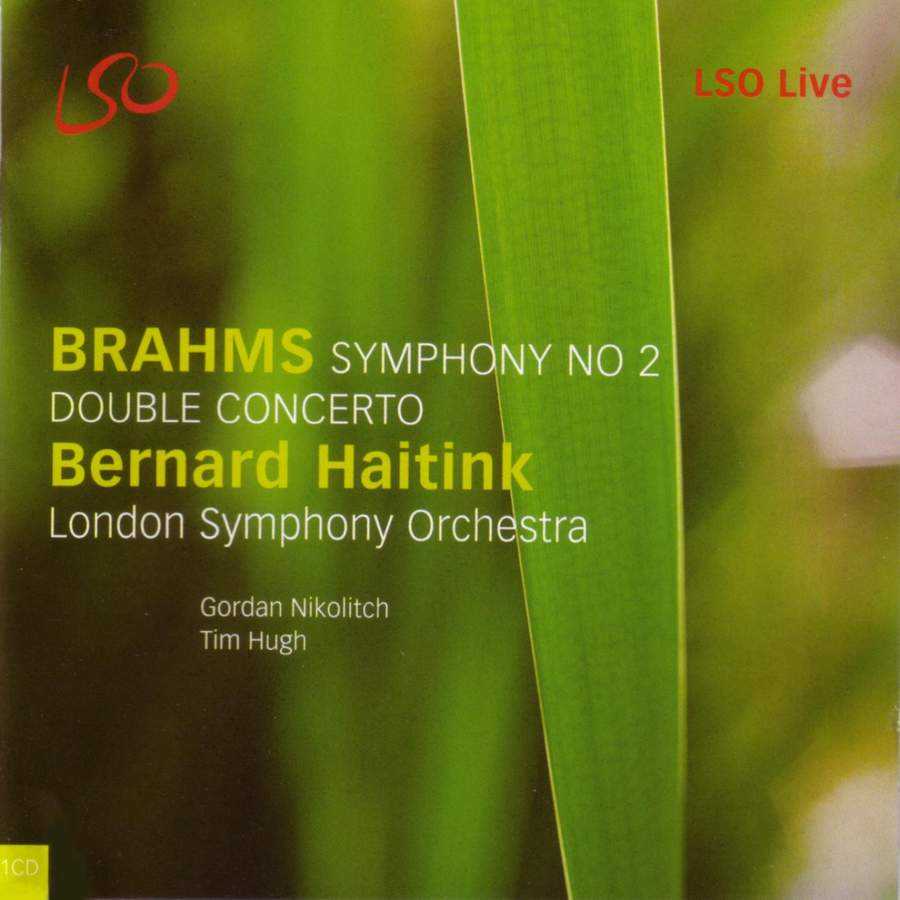
Shostakovich Symphony No 10
London Philharmonic Orchestra / Bernard Haitink
Bernard Haitink was the first non-Soviet to direct a complete Shostakovich symphony cycle on disc and his relatively sober box-set, focusing on the dignity of the music rather than its local colour, remains in the catalogue. The Tenth has never seemed dependent on performers steeped in the Russian tradition and the only drawback of Haitink’s well played, expertly recorded studio account (1977) was its over-confident tone in the enigmatic third movement. Attempts to decode that Allegretto have gone through several phases since but it remains desirable to convey a mood of wistfulness and frustrated self-assertion.
I found no lack of subtlety in this 1986 Prom relay which also has the advantage of a true sense of euphoria at the end. The applause is earned, frenzied rather than merely respectful, though rather abruptly faded. In other respects little has changed. The inexorability and stoicism of the big opening Moderato is predictably impressive and there is no hint of restraint in the Scherzo which some, Kurt Sanderling among them, have been prepared to accept as a portrait of Stalin himself.
Whatever the truth of this, Haitink’s musical priorities always deliver the goods and his admirers will welcome this unexpected reclamation from the archives of BBC Radio 3. The famously resonant acoustic of the Royal Albert Hall gives us the sound from the bottom up, with great weight in the cellos and basses. Is the Tenth Shostakovich’s greatest single achievement? Haitink may make you think so. David Gutman (Awards issue 2008)
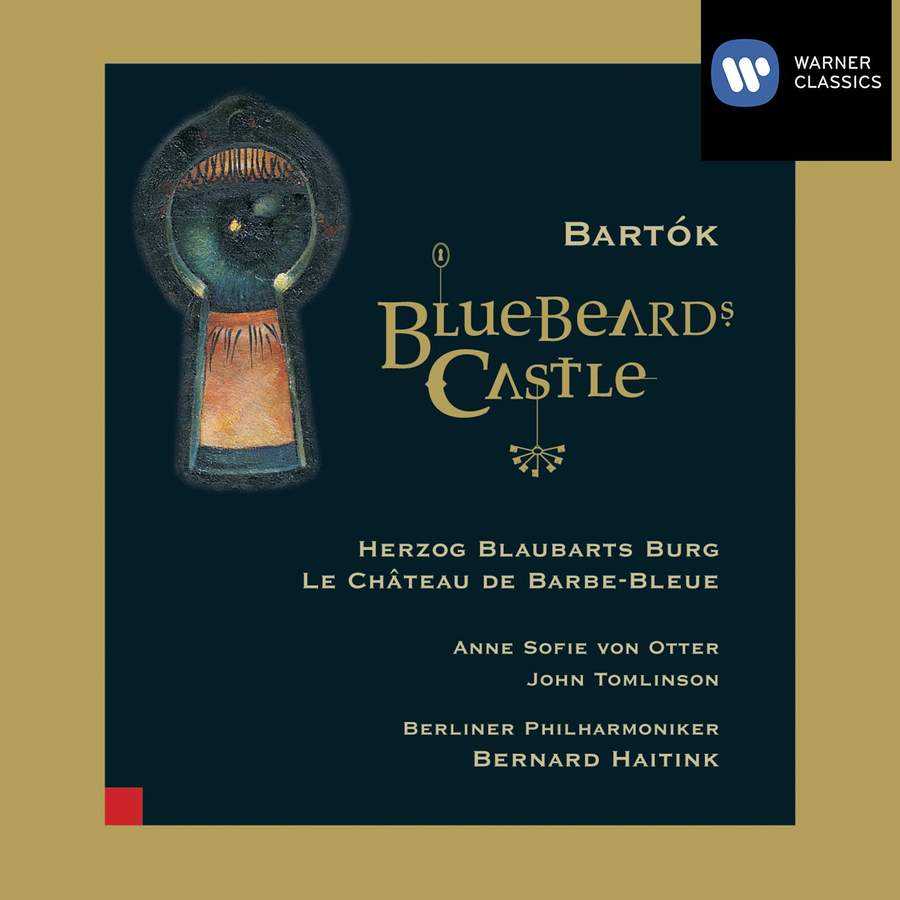
Shostakovich Symphony No 9
London Philharmonic Orchestra / Bernard Haitink
Haitink’s account of the Ninth Symphony is one of the finest achievements in his Shostakovich cycle: what had sometimes seemed a loose assemblage of rather crudely coloured musical images is revealed as a true symphony, if an oddly constructed one, with veins of bitterness, poignancy and nostalgia threaded through even its most apparently brash pages … Haitink’s Ninth is indispensable: it is very finely played and on CD even its densest climaxes are clean and transparent, despite the closeness of its recorded focus. Michael Oliver (June 1986)
